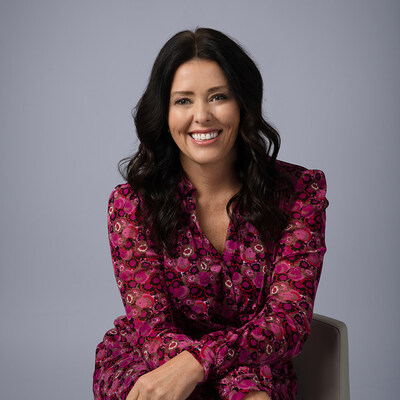At the turn of the millennium, Slim-Fast was a leading weight-loss brand with a catchy name and heralded by celebrity endorsements.
The brand’s U.S. sales hit $543.9 million in 2002, two years after it was acquired by Unilever from Nestlé for $2.3 billion. But then the Atkins Diet and its food line became a national phenomenon, stealing the thunder of Slim-Fast, whose revenues have since steadily plummeted to $222.9 million in 2007.
Slim-Fast hopes it has hit bottom, and the only way is up.
“Obviously, we are not satisfied with where we are,” says Virginia Blake West, Slim-Fast’s brand development director. “We definitely hit a lower watershed in terms of sales.”
“As part of Unilever’s vitality mission, weight management and weight loss will always be central,” she says. “Our ambition is to grow this business. Even though sales are below normal, the long-term view is that the company is committed to vitality.”
The brand is getting a larger marketing budget this year than 2007. Unilever spent $51.3 million on measured-media ads for Slim-Fast in 2006 and $36.9 million for January-October 2007, according to TNS Media Intelligence.
New marketing approaches such as a fashion show celebrating body diversity last month in Hollywood, and a rewards program are designed to reinvigorate interest in the brand.
And last summer the brand enlisted supermodel Rachel Hunter, a current Slim-Fast user, for an ongoing print and online campaign. She’s the first celebrity it partnered with since severing ties with Whoopi Goldberg after the comedienne made some poorly received remarks at a New York City Democratic party fund-raiser in 2004.
But aligning with a supermodel is a curious move considering that Slim-Fast is now trying to appeal to the emotional side of dieting. Rather than push ideal weight sizes, the company’s 2007 campaign Find Your Slim, put forth the notion that there’s no ideal weight or size, and people should set their own goals.
At the recent fashion show, Slim-Fast users of all shapes and sizes strutted their stuff on the runway. The company’s message to dieters: Feel good about the size and weight that is right for you.
And the company is carrying that message through the 2008 campaign, the Style Your Slim Challenge. Dieters register at www.styleyourslim.com and pledge to lose up to 24 pounds through June. Through the site, visitors can get personalized meal plans, access registered dieticians, view fashion tips, receive a free starter kit filled with a pedometer, and get coupons from Unilever brands.
The Web site also carries a sweepstakes for a chance to win a red carpet fashion getaway through March 31. The grand prize includes a trip to Los Angeles, a beauty makeover, tickets to a red carpet event and a $2,500 shopping spree.
Under the new rewards program, Slim-Fast Fashion Rewards, users can earn points redeemable for an American Express gift card. People register at www.SlimFast.com and collect UPC codes off shakes, snack bars and chews and their receipts. One point per code will be awarded through June 30.
“It’s an opportunity to drive loyalty,” says Donna Barker, Slim-Fast’s marketing director.
The Thompson Medical Co. introduced the meal replacement powder in 1977, developed by S. Daniel Abraham, a former salesman. Slim-Fast’s popularity peaked in the 1990s. At the time of Unilever’s acquisition of the brand, Slim-Fast was growing at 20% a year.
But sales dropped when the low-carbohydrate Atkins Diet took off in 2003. That October, Unilever was forced to cut its forecast for the second time. Overall, sales fell more than 20 percent in 2003.
“Atkins had a huge impact,” says Kat Fay, editor and senior analyst for Mintel International, a market research firm. “Slim-Fast tried to keep up with that.”
The company fought back with a new line of pastas, soups, and frozen novelties and low-carbohydrate offerings in 2003. A year later, Slim-Fast rolled out a line of high-protein items and reformulated its product line to include 50% less sugar. It also relaunched as Slim-Fast Optima.
But it wasn’t enough to reinvigorate sales, which dropped by more than $300 million in 2005 amid tough competition, according to Information Resources, Inc. Unilever reported a gain in shares in the Americas, but said sales were “well below” 2004.
“It was hard at that point in time for us to succeed,” Blake West admits. “People had so many choices. We weren’t clearly differentiated.”
The Slim-Fast product portfolio now features more than 50 items consisting mostly of shakes (liquid and powder) and “meal” bars.
And its distribution is growing. Slim-Fast began selling its products last month in value stores, such as Dollar General, to expand its reach, Barker notes.
The products, however, aren’t just for women.
“People’s perception of the brand…can be a bit feminine,” she admits. “But historically, men and women have used it.”
Rumors circulated last month that Slim-Fast approached rapper Eminem as a potential spokesperson. But Blake West says no offer was made. Instead the company gave the artist free product, which was requested.
To appeal to men, the 31-year-old brand in its early days ran TV spots with endorsers like Tommy Lasorda, Peter DeLuise and Mel Torme, among female personalities like Kathie Lee Gifford.
But until mid-2007 it went a few years without a known face. Three years ago consumers threatened to boycott Slim-Fast in response to then-spokesperson Whoopi Goldberg publicly mocking President Bush’s surname as a sexual reference. She was promptly dropped from the ad campaign.
Hunter’s current alliance with Slim-Fast sparked some backlash, particularly in online forums. People questioned why the brand used a slim celebrity, a model no less, to pitch its products.
“I also wonder how consumers could be so willfully dumb as to buy the idea that if Hunter decides to use Slim Fast, that it means anything at all about their own chances for success,” one poster wrote on Diet Blog. “She’s already super-skinny. At least take a FAT washed up actress or model, and then put them on Slim-Fast. If they get super-skinny, it still doesn’t mean much (given their trainers & chefs and financial incentives, etc.), but it might mean something!”
Blake West says Slim-Fast approached Hunter because she embodied the Find Your Slim point of view and was a brand supporter.
How else will Slim-Fast drive sales? Most likely through new products.
For now, Slim-Fast is keeping mum on what new items may hit the market.
“We will do it selectively and only when we can bring a point of difference” to the industry, Blake West says.
She admits it won’t be easy for the brand to get back to its 2002 levels. And it’s now facing competition from a market newcomer, Alli, an over-the-counter, weight-loss pill.
At least one analyst is optimistic.
“The Slim-Fast brand has been around for years,” Fay says. “It’s one of those brands that people trust. We don’t see Slim-Fast going away.”
Slim-Fast’s U.S. sales have steadily dropped since 2002. But executives are hoping for a turnaround. Here’s a look at the numbers and some factors that might have played a role, good or bad, for the company.
2002: $543.9 million
- Atkins Diet craze begins.
2003: $441.1 million
- Celebrities like Brad Pitt and Jennifer Aniston jump on the bandwagon and endorse the Atkins Diet.
2004: $309 million
- Marc Covent steps down as Slim-Fast’s president. Slim-Fast continues to lose market share. Atkins Diet peaks.
2005: $243.1 million
- Unilever’s European division takes write-down on Slim-Fast after sales slump. Unilever USA launches Slim-Fast muffin bars to spark sales.
2006: $241.8 million
- Slim-Fast shows improvement as market shares in the Americas rise, but fails to surpass 2005 revenue.
2007: $222.9 million
- Sales dip further, despite Slim-Fast’s new marketing, Find Your Slim. The firm launches new Easy to Digest products to boost its competitive edge. — Amy Johannes
 Network
Network

